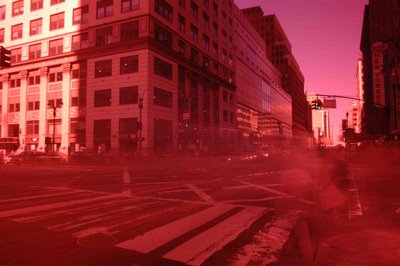


When using heavy ND filters on the D70s, I get a heavy magenta cast that I can't seem to correct with the WB feature.
I shot this test partially to see how far I can correct while shooting in the highest quality JPEG setting, not the RAW mode.
The reason for me shooting in JPEG rather than RAW is to get the most number of frames as possible on one CF card (in this case, 1gb). With the JPEG mode in this card, I can get about 480 frames (even though the counter erroneously states 290) rather than aoout a third of that. This means about 20 seconds at 24fps.
The question is, how far can I correct in JPEG mode versus RAW? And is JPEG sufficient?
So here are the first parts of my tests : first with JPEG. Keep in mind the corrections were done quickly and with a 12" powerbook - not the greatest way of color correcting.
The 3 pictures above show : uncorrected, corrected A, corrected B.
The images were transferred to my laptop, corrected in photoshop (mainly using the Levels, Color Balance and Saturation tools), and compressed in order to publish here.
Camera stats are : 18mm lens, f/22, 30 second exp., ND3.0, noise reduction off.
I was surprised at how far I could take the image, yet it seemed a little tricky to get rid of that magenta cast and bring it back to a 'normal' look.









